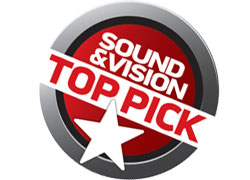|
Sep 13, 2010 |
|
Mar 29, 2010 |
|
Mar 01, 2010 |
|
Jan 21, 2010 |

 Price: $6,995 (optional Schneider Optics lens: $7,995) At A Glance: Big, bright, punchy image • Black level and shadow detail compete with the best • Excessively wide color gamut
Price: $6,995 (optional Schneider Optics lens: $7,995) At A Glance: Big, bright, punchy image • Black level and shadow detail compete with the best • Excessively wide color gamut



















